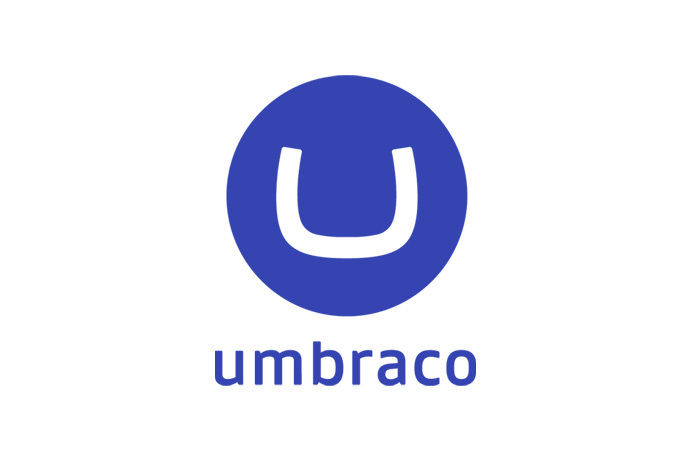October 24, 2025
Who Uses Umbraco?
Umbraco powers over 730,000 websites worldwide, including corporations, universities, nonprofits, government agencies, and startups. It is chosen because it stays flexible and future-proof without sacrificing simplicity.
Key Takeaways
- Umbraco works well for e-commerce because it lets you manage content and products in one familiar environment.
- Umbraco Commerce is the official add-on, ideal for businesses that want full store management inside the Umbraco backoffice.
- Ucommerce supports more complex enterprise needs, including multi-store, multi-currency, and highly customized catalog structures.
- BigCommerce headless allows brands to use BigCommerce as the commerce engine while Umbraco controls the content and presentation layer.
- Choosing the right e-commerce approach depends on the size of your store, your growth plans, and how much control your team wants over checkout, pricing, and product structure.
Why Organizations Choose Umbraco
If you are exploring content management systems, you may wonder what Umbraco is used for in the real world. Umbraco is known for its flexibility, scalability, and intuitive editing experience, making it a strong fit for organizations that need a website or digital platform that can evolve. Because it adapts to each business instead of forcing a one-size-fits-all structure, Umbraco is used across a wide range of industries and team sizes.

Industries and organizations that commonly use Umbraco CMS include:
- Healthcare systems and medical providers
- Universities and educational institutions
- Government agencies and public service organizations
- Professional services firms and consultancies
- Manufacturers and industrial companies
- Financial services and insurance providers
- Nonprofits and community organizations
- E-commerce and retail brands
- Hospitality and tourism businesses
- Technology and software companies
1. Building Websites of Any Size
Whether you are launching a simple informational site or a large enterprise platform with thousands of pages, Umbraco provides a strong foundation. Editors can easily create new pages, update content, and manage media without relying on developers for every change.
2. Internal Company Portals and Intranets
Many organizations use Umbraco to build secure internal communication hubs. These intranets streamline collaboration, training resources, employee documents, and team updates into a single accessible location.
3. Managing Content for Mobile Apps
Content does not live only on websites. With Umbraco, your content can power mobile applications, connected devices, and digital screens through clean and flexible APIs.
4. E-commerce and Product Catalog Sites
Whether you run a small online shop or a global retail marketplace, Umbraco can support it. The official Umbraco Commerce add-on delivers multi-market support, flexible product models, and built-in analytics—all fully integrated into the Umbraco CMS.
For businesses with existing ecosystems, solutions like Ucommerce offer deep .NET commerce capabilities that integrate content and commerce.
These platforms allow your marketing team to manage products, content, promotions, and orders from a unified back-office, ensuring your store grows with your brand while giving developers the freedom to customize everything.
5. E-commerce Solutions That Work With Umbraco
| Feature / Need | Umbraco Commerce (Official Add-On) | Ucommerce (Enterprise Commerce for .NET) | BigCommerce (Headless Integration) |
|---|---|---|---|
| Best For | Businesses that want commerce managed fully inside Umbraco | Complex enterprise catalogs and multi-store setups | Brands that already use or want BigCommerce storefront features |
| CMS Integration | Fully native to the Umbraco backoffice | Strong integration with Umbraco UI and workflows | Connects through APIs and headless storefront features |
| Product Catalog Management | Flexible product types with built-in variants | Highly customizable product and catalog structures | Catalog managed through BigCommerce admin, content managed in Umbraco |
| Checkout and Payments | Supports multiple payment providers | Advanced checkout and pricing rules | Uses BigCommerce’s checkout and payment ecosystem |
| Multi-Market Support | Localized pricing, languages, and regional setups | Strong support for multi-store and multi-currency | Works well for global storefronts through BigCommerce settings |
| Developer Flexibility | Designed to be extended by .NET developers | Highly customizable for enterprise needs | API and headless flexibility for custom front-ends |
| Ideal Use Case | Store owners who want everything controlled in Umbraco | Enterprise teams with complex digital commerce requirements | Companies adopting a modern headless architecture |
5. Content Editing and Publishing Workflows
Umbraco’s backoffice interface is designed for everyday content editors. Teams can schedule updates, manage media libraries, collaborate on page drafts, and publish confidently with built-in versioning.
6. Personalizing User Experiences
Personalization is becoming essential for engagement. Umbraco enables content to adapt based on user behavior, location, role, or preferences, creating meaningful and relevant experiences.
7. Custom Feature Development
This is one of Umbraco’s biggest strengths. Developers can build features that match unique business needs rather than forcing your organization to work around software limitations. If you can envision it, Umbraco can power it.
8. Seamless Third-Party Integrations
CRMs, ERPs, marketing automation, analytics tools, search platforms, and identity services all connect easily to Umbraco. Its flexibility makes it a natural fit for enterprise systems.
9. Strong Security and Compliance Features
Since Umbraco is built on Microsoft’s .NET framework, it benefits from a secure foundation. When kept up to date, Umbraco provides reliable protection against common threats and vulnerabilities.
10. Growing With Your Business
As your organization expands, Umbraco scales with you. Whether traffic increases, new content sections are needed, or global localization becomes a requirement, Umbraco can handle the growth.
Why Umbraco Fits So Many Different Needs
Umbraco is often called the “friendly CMS” because it focuses on usability without sacrificing power. Editors feel confident. Developers feel free to build. Businesses avoid headaches later.
Why This Matters
Using Umbraco for e-commerce means you can manage both site content and product information in one place. Marketing teams get simplicity. Developers get flexibility. Your business gets a platform that can grow without the need to replatform every few years.
If you want a CMS that adapts as your business evolves, Umbraco is an excellent fit.
Frequently Asked Questions: Umbraco CMS
What types of websites can you build with Umbraco?
You can use Umbraco to create anything from small business sites to enterprise-level platforms. It scales easily as your content or visitor volume grows.
Is Umbraco good for content editors?
Yes. The editing interface is intuitive and clean. Most teams can update pages, images, and navigation without needing developer support.
Can Umbraco support e-commerce?
Yes. Umbraco integrates with e-commerce engines like Vendr and BigCommerce. You can manage products and content in one place.
Is Umbraco secure?
Umbraco runs on the Microsoft .NET Framework, which offers reliable security features when kept up to date. It provides strong protection for business-critical websites.
Can Umbraco integrate with third-party tools?
Yes. Umbraco works well with CRMs, analytics tools, marketing platforms, ERPs, and custom applications. It is highly integration-friendly.
Let’s build something great together.
Tell us what you need and we’ll take it from there.


